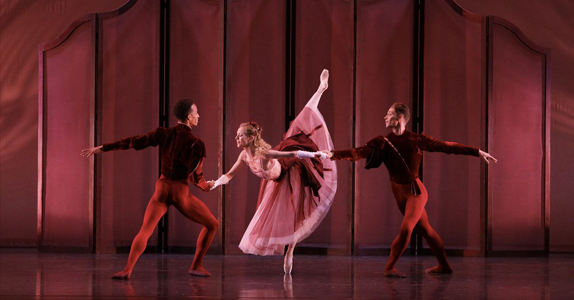
People & Business
The Sarasota Ballet’s 2022 Season Opens with Program 4
January 5, 2022 – Sarasota
The Sarasota Ballet opens the New Year with a return to triple-bill programming. Program 4 – Love & Betrayal, performing 28 – 31 January 2022 at the FSU Center for the Performing Arts, leads with Sir Frederick Ashton’s Valses nobles et sentimentales, a romantic ballet lost for twenty-five years until its meticulously constructed 2012 revival and American premiere. Next, Dame Ninette de Valois’ The Rake’s Progress pivots from passion to pathos in this narrative of a wealthy heir’s descent into madness and squalor. Love & Betrayal closes with Johan Kobborg’s vibrant production of Napoli Act III, originally choreographed by August Bournonville and a staple of classical Danish ballet.
“When you look at this Program, it’s a great representation of what The Sarasota Ballet is known for and coincidentally a program that has special meaning to me,” explains Iain Webb, Director of The Sarasota Ballet. “The three ballets represent not only the importance of the history and legacies of ballet, but also of ballet’s range and, through Johan, a connection to one of the great artists of today. For myself, Valses nobles et sentimentales holds an important place in my heart as my time spent working with Sir Fred on its 1987 revival is quite possibly one of my most treasured memories. De Valois, or Madam as we all affectionately called her, established a narrative tone through The Rake’s Progress that impacted the development of British dance and can still be felt in many of today’s ballets. Johan is not only an extraordinary individual, but also a dear friend, and so having him working with our dancers on his production of Napoli Act III is truly exciting for us all.”
Valses nobles et sentimentales first took form as a suite of waltzes by Maurice Ravel in 1911, and has served as inspiration for numerous choreographers including George Balanchine and Sir Kenneth MacMillan. Sir Frederick Ashton’s choreographic interpretation would take place in 1947 for the Sadler’s Wells Theatre Ballet, testing the dancers’ abilities in the post-World War II era. Later revived by Ashton in 1987 (a year before his passing), it would remain dormant for twenty-five years until its 2012 reconstruction by Iain Webb and Margaret Barbieri for The Sarasota Ballet. During the Company’s 2016 performances at the Joyce Theater in New York, Alastair Macaulay described the ballet for The New York Times as “…a softly dazzling masterstroke of choreography.”
Based on a series of eight paintings by the 18th-century English artist William Hogarth, The Rake’s Progress was initially conceptualized and orchestrated by Gavin Gordon; following her earlier success with 1931’s Job, Dame Ninette de Valois was approached to choreograph the ballet to be performed by her burgeoning company, the Vic-Wells Ballet. First performed at the Sadler’s Wells Theatre on 20 May 1935, with Sir Robert Helpmann dancing the principal role of the Rake and Dame Alicia Markova as the Betrayed Girl, The Rake’s Progress was an instant success and would provide additional momentum for the Vic-Wells Ballet, serving as a step towards its eventual chartering as The Royal Ballet in 1956.
“With The Rake’s Progress, we tap into a darker and more dramatic narrative than often seen in ballet,” says Margaret Barbieri, Assistant Director of The Sarasota Ballet. “Dame Ninette de Valois’ choreography breathes life in Hogarth’s paintings, capturing not only complex human emotions and story, but also creating a ballet that has enthralled audiences and dancers alike. Passing on Madam’s irreplaceable artistry, and that of Dame Alicia to current and future generations continues to be one of the most rewarding elements of my career.”
Napoli, also titled The Fisherman and His Bride, was originally choregraphed in 1842 for the Royal Danish Ballet by ballet master and choreographer August Bournonville. Now recognized by many as Bournonville’s signature work, Napoli utilized significant pantomime in its first two acts, with only the third act heavily focused on dance; consequently, later productions would primarily emphasize the third act and drop much of the pantomime component, as is the case with Johan Kobborg’s Napoli Act III production. The result is an effervescent, dynamic series of dances that capture the spirit of Danish ballet.
The Sarasota Ballet’s performances of Love & Betrayal are sponsored by Sarasota Scene Magazine.
For a full list of performances please visit https://www.sarasotaballet.org/



You must be logged in to post a comment Login